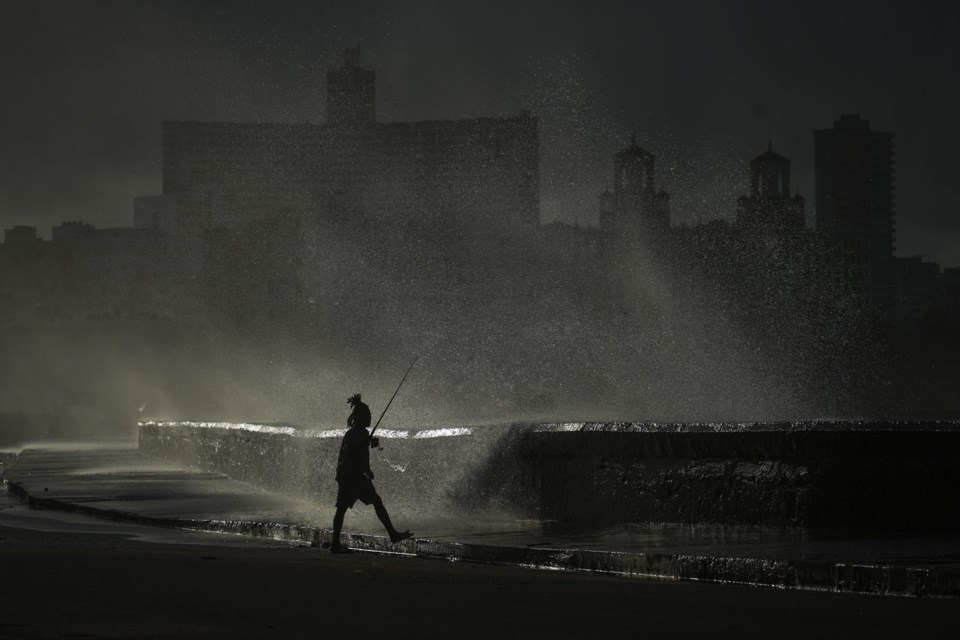HAVANA (AP) — Ramon Espinosa started working for The Associated Press in 2000 in Spain. Five years later, he was sent to the Dominican Republic and then Haiti. Since 2012 he has been based in Cuba. Here’s what he said about making this extraordinary photo.
After three days covering the massive blackout on the island of Cuba, I was driving along the famous Malecon, one of the main roads leading to the neighborhoods of Centro Havana or Old Havana. I wanted to work those areas that afternoon as I searched for an image that was different from the rest of what I had sent to The Associated Press.
As the sunlight was going down at dusk, a wave broke on the nearby seawall, creating a light situation that shocked me.
I looked back to see what the image would look like at that spot, and I could see part of the city still without lights on the buildings. Until that moment I thought I had no new images to send.
Although sometimes I try to stay away from certain places so as not to be repetitive in the images I send to my editors, I decided to wait 15 minutes to see what would happen in that sliver of light. It was well worth it. What emerged created a shocking image that would define what was happening those days with the energy issue.
How I made this photo
Once positioned, I chose to wait to see if that magical moment of light would repeat itself. I tried to find the angle that would allow me to get all the elements in the frame. The perfect place was in the middle of the road. Luckily, it only served as one-way traffic lanes due to bad weather, so I could stay in the middle and see the buildings in the distance, which together with the perspective of the curve gave me the background of the image. Now, I just had to wait, hopefully, for some human element to coincide with it and, of course, for some big wave to break on the wall.
I saw some fishermen trying to catch some prey in the choppy waters. Normally they are on the wall, but it was too dangerous now because the waves were breaking against it — they could fall into the sea or be hit by stones dragged by the strong waves. Instead, they were positioned between the sidewalk and the road lane, which is unusual. That added another interesting element to the image.
I used a Sony A1 and worked with a zoom set to 175 mm with an aperture of 5.6 to see some sharpness in the buildings in the background behind the main subject and a high shutter speed to try to freeze the water as if it were sugar in the air.
Why this photo works
I think it works because of the moment that is produced in the mixture of all the elements of the image: the loneliness of the city and the abnormal position of the fisherman on the road, with the dark background of the buildings and the glow of the water produced by the last rays of light of the sunset when the wave breaks. The result is almost black and white, giving the feeling of uncertainty that we were living in those days due to the lack of light.
For more extraordinary AP photography, click here.
Ramon Espinosa, The Associated Press




